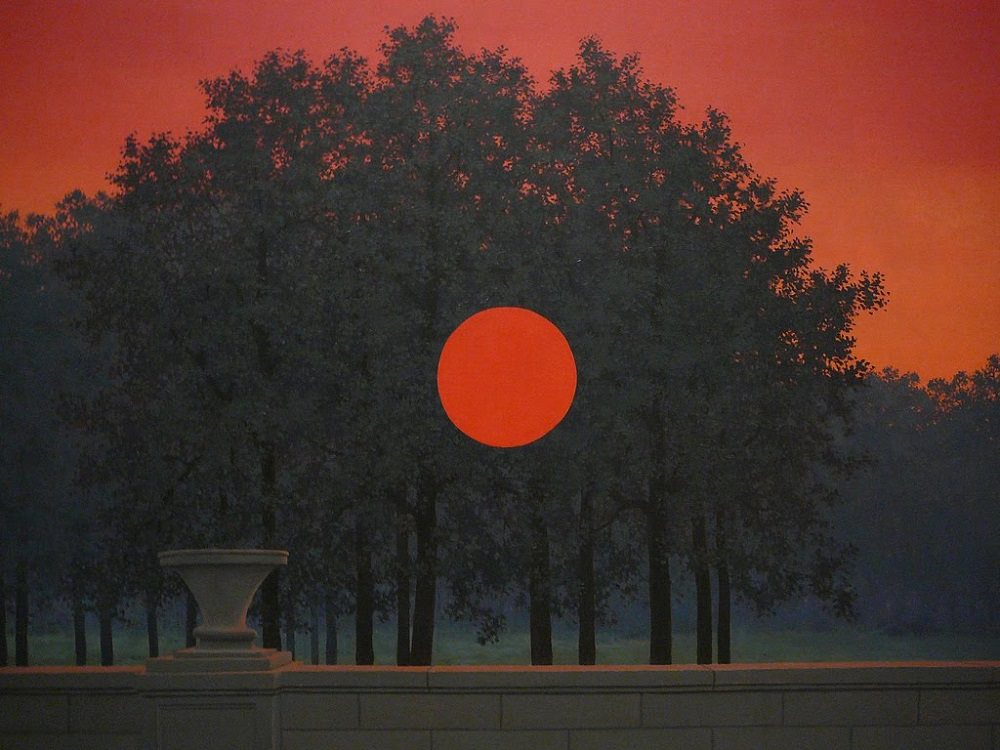René Magritte is a Belgian painter of the 20th century who was famous for his distinctive approach to surrealism. While some French Surrealists experimented with new techniques, Magritte explored the interactions of textual and visual signs, simulacrum, and rational inquiry in his works. Magritte’s artworks challenge our ordinary way of thinking through their illusions and perspectives.
Here we collect five of Magritte’s paintings that shock our view:
1. The Blank Signature, 1965

The Blank Signature, 1965 by Rene Magritte. Courtesy of https://www.renemagritte.org/
This painting has the same effect as the impossible fork that was first reported by D.H. Schuster in 1964. It seems inconsistent with our conception of a rider in a forest. The horse is separated by a patch of background grass. One of the tree trunks is also in front of the horse but its base is behind the horse.
2. The Banquet, 1958

The Banquet, 1958 by Rene Magritte. Courtesy of https://www.renemagritte.org/the-banquet.jsp
Do you notice the strange thing in this painting? Yes, the red circle of the sun. It is painted in front of the trees. this picture silently messes up our ordinary perspectives.
3. The Empty Picture Frame, 1934
The Empty Picture Frame, 1934 by Rene Magritte. Courtesy of https://www.renemagritte.org/the-empty-picture-frame.jsp
Can you imagine a frame displayed without a painting? Magritte depicts this kind of imagination. This work is a painting within a painting. It shows us the wall of a room as if the painter had not drawn anything in the frame. In fact, the artist painted brick walls as if it reveals what’s behind the frame. It is apt to Magritte’s statement, “everything we see hides another thing, we always want to see what is hidden by what we see”.
4. The Human Condition, 1933
The Human Condition, 1933 by Rene Magritte. Courtesy of https://www.renemagritte.org/the-human-condition.jsp
At first sight, The Human Condition is beautiful scenery in front of a window. However, under further observation, the beautiful scenery is not the reality but a representation on canvas. It evokes questions, such as: is there any difference between the real scenery and the painting on the easel? is the painting more real than the reality? Is there any reality outside?
5. La Lunette d’approche/ The Looking Glass, 1963
René Magritte, La Lunette d’approche, 1963. © Rene Magritte/ADAGP. Licensed by Viscopy, 2014. https://www.researchgate.net/figure/
The Looking Glass depicts the reflection of beautiful skies and clouds in the window. However, the slight opening of the window revealed the emptiness outside. This painting can perfectly describe, what Jean Baudrillard called, a simulacrum, as a representation that replaces reality. Simulation is no longer an imitation or a referential being. It is generated by models of a real without origin or reality.
